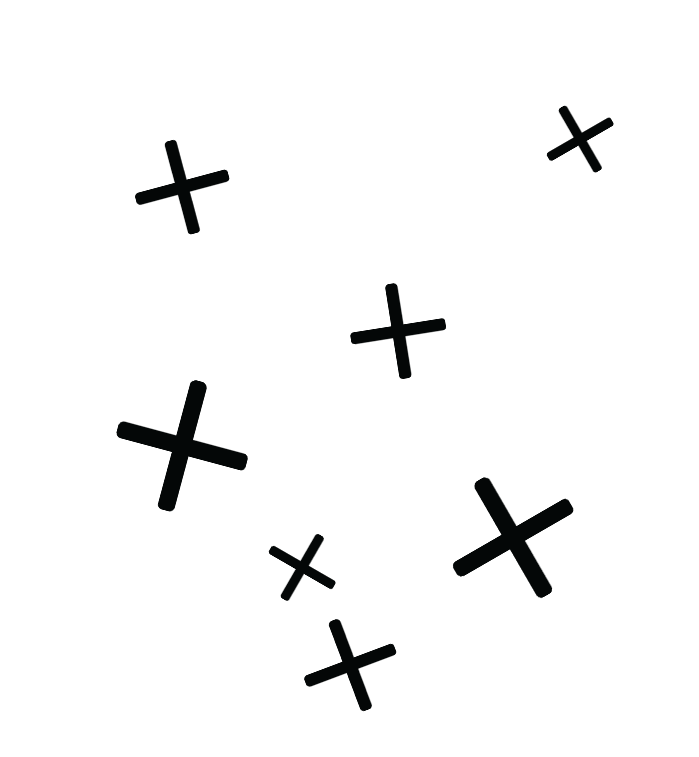METHODs
Our methods are derived from psycho-social, psychoanalytical, conceptual art and architectural research techniques. This forms a method set to explore buildings as psychological subjects. We work with organisations and use the set in a playful and thoughtful manner. It is simultaneously experimental and game-like. The method set is applied to a building and operationalised in a custom manner according to the conditions, the scope of the project and degree of access to the architecture and availability and identity of potential participants. Methods can be used in different combinations and sequences. Each can be used as a stand-alone educational, participatory, experiential and potentially exhibitable event; or used in conjunction for analysis and triangulation of data. In all cases the PSYCHOSTRUCTURES team will develop a psychological profiling of the building under study.
participants
In employing the methods, we work with participants from across the strata of the organisation (e.g. directorship, governors, administrators, front of house, education, security and maintenance staff), or from the wider community of the building (e.g. visiting audience, local population, remote audience), or the commissioners of the building (e.g. architects, funders etc), all of whom will be supported in the experience by the PSYCHOSTRUCTURES team.
family tree
FAMILY TREE FOR A BUILDING treats the building as a subject. It charts the building’s life, aligning it with the psychotherapy idea of life history. The family tree constructs a family for the building of related architecture, objects, people and other animate and inanimate entities and influences. An accompanying timeline charts events significant to the building through its prehistory, site and location, design and commissioning, and subsequent lifespan. Both are foundational in the discovery of conscious and unconscious impulses that bring the building into being. The form of the family tree is diagrammatic with text, images, moving imagery, sound and other phenomena representing family members and their liaisons, and the timeline is text set out in a chronology. The family tree and timeline are generated by the PSYCHOSTRUCTURES team through archive desk-top research and interviews with occupants or people significant to the building.
VISUAL MATRIX is a group process led by a PSYCHOSTRUCTURES host. Participants are invited into an immersive setting and shown images of different situations and aspects of the building under study. [As an alternative, a SOCIAL PHOTO MATRIX is based on photographs taken by building users themselves]. The group then freely associates any responses, mental images, memories, stories, songs or other experiences evoked by the photographs. This is a space for the exploration of unconscious material elicited by the images shown. Finally there is a shorter sense making group process, reflecting on the associative responses.
VISUAL MATRIX
SOCIAL DREAMING
SOCIAL DREAMING is based on the assumption that dreams reflect not only individual experiences, but also the experiences we all share by being part of a wider and shared environment. The process begins with an invitation to participants to join a silent tour of the building. This may be at night. The tour ends in a setting created as a space of reverie. In this space the Social Dreaming matrix invites participants to share their dreams and associations to them. The assumption here is that stimuli associated to the building affects the free associative process relating it to the building’s unconscious dimensions. The matrix is followed by a sense making group reflection.
DEPUTISED OBJECTS
The PSYCHOSTRUCTURES team develop two deputies that stand in for the building: one a physical object and one a virtual haunting object. They are ‘doubles’ of the building. Both embody its architectural motifs and its psychological characteristics. The method develops an interactive installation and enlists the viewer as a third protagonist in a transitional space of encounter, empowerment and play. Through electronics, the viewer's movement and position of the physical object is captured and deployed to manipulate the haunting architectural object. This mirrors, slows down and scales up the viewer's movement. Simultaneously the viewer’s behaviour is informed by the choreography of the two objects. The viewer is plunged into psychic and physical rapport with the architecture and its deputies.
ARCHITECTURE ON THE COUCH
The building is invited to partake in psychodynamic therapy with a PSYCHOSTRUCTURES therapist through one or more human stand-ins. The stand-ins may have different levels of knowledge about the building - an occupant, passer-by, historian, operations manager or commissioner - but all must consider the building as ‘I’. Therapy sessions may collect many voices to create one assembled voice of the building. In preparation for therapeutic sessions, approaches to the therapy may be developed from Family Tree and Timeline Materials and any previous psychosocial activities. Architecture on the Couch can be scaled up as a method to enlist citizens of a city to stand-in for their own choice of significant structures. Through multiple therapeutic sessions across a diverse range of architectural subjects a psychological profile of the city will begin to emerge.
DAYS OF ACTION combines collective action research with the psycho-social, to address the building as an affective and creative protagonist in the choreography of our everyday. We use a number of approaches, all of which form a collective of participants that then navigates the transitional spaces of the building. The exertion of power - power to move and power over movement is constantly re-negotiated according to the needs and demands of the group and in response to built form and associated social codes. Through moments of start, stop and stall (Moving and Being Moved), fused bodily formation (Solidarity Line), relayed address (What is the Building Calling For?) a collective intelligence emerges, and a way of ‘being many’. Days of Action uncovers our entangled relation with architecture and reveals new social, spatial and vocal possibilities for its spaces. The action is followed by a group free association to encourage a deeper understanding of events and bring unconscious impulses to light.






